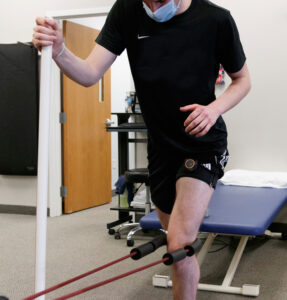
Kinesio Taping, or Kinesiology taping, is a physical therapy technique used to help improve a tissue’s healing process while offering stability to muscles and joints.
Some of the immediate benefits include:
- Decreased pain and inflammation
- A reduction in swelling
- Relaxation of overworked muscles
- Improvements in mobility
- Facilitation of specific muscle group
How does Kinesio Taping work?
There are multiple theories around how and why Kinesio Taping is an effective form of treatment. Research indicates that the Kinesio Tape affects small receptors in the skin known as proprioceptors. These proprioceptors give the brain information regarding where the body is in space.
Oftentimes, after an injury, these proprioceptors become dulled making their messages to the brain delayed. For example, after an ankle sprain we tend to see an increased likelihood that you will experience another ankle sprain. The reason being, when the ankle starts to roll again, the proprioceptors are delayed at informing the brain. Therefore, the ankle rolls and we end up with another injury.
Kinesio Taping is a way to stimulate these receptors during a standard course of rehab to promote healing and prevent a chronic injury from occurring.

What conditions has Kinesio Taping been shown to be effective?
- Neck pain
- Lower back pain
- Rotator cuff tendinopathy
- Patellofemoral Pain Syndrome
- ITB Syndrome
- Achilles Tendonitis
- Plantar Fasciitis
- General swelling
- Muscle tightness
How long will Kinesio Tape stay on for?
Once your CMPT therapist applies the Kinesio Tape to the affected area, you should expect the tape to last for 5-7 days. The tape can endure showers and your normal recreational activities. If it is found that you benefit from Kinesio Tape, your CMPT therapist will educate you on self application techniques as this can be an excellent treatment strategy prior to sport and competition.